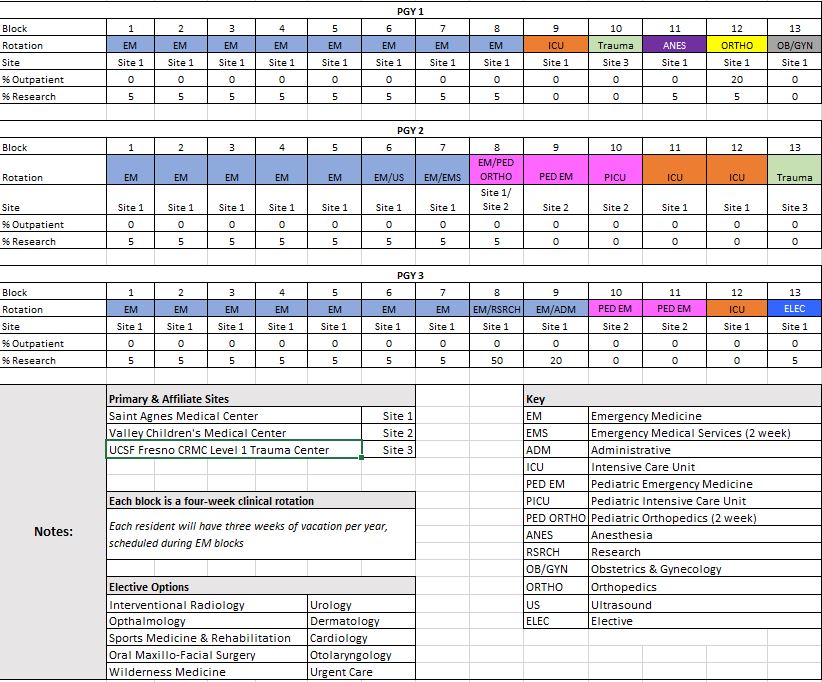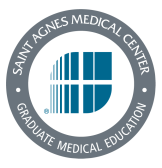Curriculum
Didactics/Academics
Emergency Medicine Conference: Our conference schedule provides dynamic educational exposure to the core curriculum of Emergency Medicine using both shorter format lectures, group discussion, and asynchronous learning. In addition, each resident will be given direct supervision and mentoring in order to achieve academic success and to prepare for oral and written boards.
Simulation: Saint Agnes Medical Center has an established a Simulation Center that provides advanced clinical training for EM residents. Simulation scenarios occur monthly to enhance the residents’ decision-making skills and clinical reasoning. Learners will also have the opportunity to become simulation trainers during the residency program.
Transesophageal Echocardiogram (TEE) Program
Saint Agnes Medical Center has recently embarked on an innovative journey by initiating a Transesophageal Echocardiogram (TEE) program within its Emergency Department (ED). This program aims to enhance the care provided to critically ill patients, particularly those undergoing cardiopulmonary resuscitation (CPR). Several ED physicians have undergone specialized training in resuscitative TEE, allowing them to utilize this advanced imaging technique during critical moments.
TEE offers several distinct advantages in the management of patients in cardiac arrest. Unlike transthoracic echocardiography, which can be limited by poor acoustic windows, TEE provides superior image quality and can be performed without interrupting chest compressions. This is particularly beneficial during CPR, as it allows for real-time assessment of cardiac function, the detection of reversible causes of arrest, and guidance in the optimization of resuscitative efforts.
The integration of TEE into the ED at Saint Agnes represents a significant advancement in the care of critically ill patients, allowing for more precise and effective resuscitation. This program underscores the department’s commitment to leveraging cutting-edge technology to improve patient outcomes.
Clinical Rotation Schedule Post Graduate Year 1 - 3
Each year of residency has 13 4-week blocks. All rotations are at Saint Agnes Medical Center except for Pediatric (at Valley Children's Healthcare) and Trauma (at UCSF Fresno CRMC Level 1 Trama Center) rotations.

Year 1
The first year is demanding but provides residents with well-rounded experiences in both traditional internship rotations and emergency medicine. Residents will develop their core medical knowledge in order to formulate critical decisions in the Emergency Department.
- Emergency Medicine – 8 blocks
- Critical Care/ICU – 1 block
- Trauma – 1 block (Off Site)
- Obstetrics/Gynecology – 1 block
- Anesthesia – 1 block
- Orthopedics – 1 block
Year 2
The second year is focused on improving the residents' ability to manage patient flow in the Emergency Department and develop academic competency through supervising/teaching junior residents and students.
- Emergency Medicine – 6 ½ blocks
- Critical Care/ICU – 2 blocks
- Pediatric ICU – 1 block (Off Site)
- Pediatric Orthopedics – half block (Off Site)
- Pediatric Emergency Medicine – 1 block (Off Site)
- Emergency Medical Services – half block
- Ultrasound – 1 block
- Trauma – 1 block (Off Site)
Year 3
In the final year, residents will refine their ability to problem-solve, perfect patient disposition and provide efficient medical care. Each resident will be given time to examine their own personal academic interests through elective and research rotations. In addition, an administrative block will enable each resident to experience different supervisory roles required within an Emergency Department.
- Emergency Medicine – 8 blocks
- Research – half block
- Administration – half block
- Elective – 1 block
- Critical Care/ICU – 1 block
- Pediatric Emergency Medicine – 2 blocks (Off Site)






